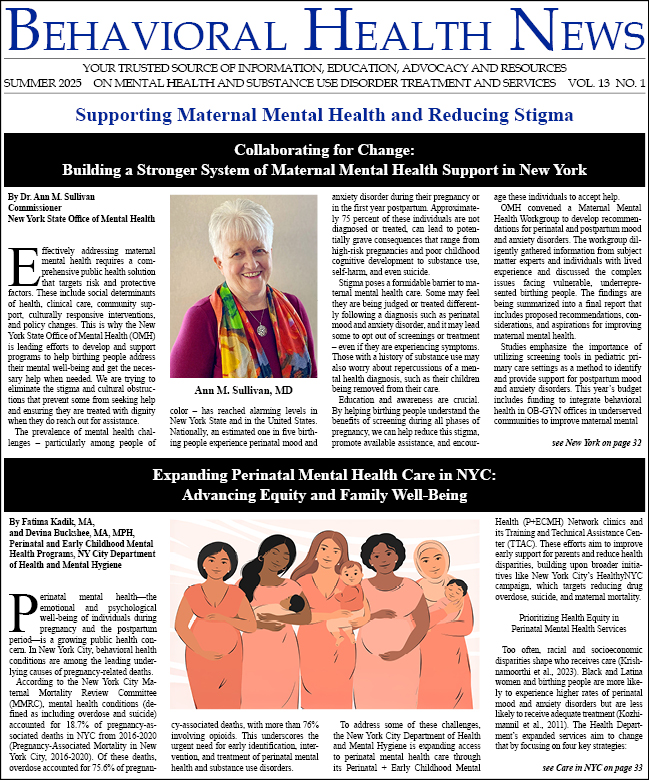Mental health stigma—those persistent negative attitudes, beliefs, and stereotypes about mental illness—remains a powerful barrier to care. When these perceptions translate into actions in our society, they become discrimination, and this limits opportunities for healing. Even though mental health conditions are common, stigma and misinformation continue to fuel judgment, silence, and shame, particularly around maternal mental health.

This stigma can delay or even prevent individuals from seeking help, whether from loved ones or from community-based programs. It can also lead people to abandon treatment prematurely. While stigma is a widespread issue, it can be especially pronounced in rural areas, where privacy is harder to maintain and support systems may be limited.
🧠 Understanding the Forms of Stigma
To effectively address mental health stigma, it’s important to recognize the different ways it can manifest:
- Structural stigma refers to systemic barriers that are embedded in our laws, policies, and institutional practices. These can limit opportunities for people with mental health conditions, particularly in healthcare, housing, and employment settings.
- Public stigma encompasses the general population’s beliefs about people with mental health conditions, their families, and even the professionals who support them. These beliefs often portray individuals as weak or flawed, reinforcing discrimination and discouraging help-seeking.
- Self-stigma occurs when individuals internalize these public attitudes, leading to feelings of shame, self-blame, and diminished hope for their own recovery.
🏛️ New York State’s Commitment to Change
The New York State Office of Mental Health (OMH) is actively working to reduce—and ultimately eliminate—mental health stigma across the state. Through its Strategic Plan for Mental Health Stigma Reduction, OMH funds and implements community-based initiatives and collaborates across agencies to support evidence-based approaches. Much of this work is supported by the Mental Health Stigma Tax Check-off Fund.
OMH’s mission is clear: stigma undermines the effectiveness of mental health and housing programs by making communities less receptive to services and discouraging individuals from seeking care. Reducing stigma is essential to building inclusive, supportive environments where recovery is possible.
🤝 What Works: Evidence-Based Approaches
Research shows that the most effective stigma-reduction strategies are “contact-based”—that is, they involve real people sharing their lived experiences with mental health challenges and recovery. These personal stories humanize mental illness and foster empathy.
Other approaches include:
- Educational campaigns, which are widely used but may have limited long-term impact unless paired with deeper engagement.
- Advocacy and protest, especially when tied to specific events or policy changes, can shift public perception and lead to systemic reform.
🤰 Maternal Mental Health: A Hidden Crisis
Mental health stigma is particularly harmful in the context of maternal health. In fact, the leading complication of childbirth is not physical—it’s mental. Perinatal Mood and Anxiety Disorders (PMADs) affect approximately 1 in 5 pregnant and postpartum individuals. Among Black and Brown birthing people, that number rises to 40%.
Despite the prevalence, an estimated 75% of those experiencing PMADs go undiagnosed and untreated—largely due to stigma. The consequences are profound: untreated PMADs can lead to prolonged suffering for the parent, child, and family, and in severe cases, may result in suicide or infanticide.
PMADs encompass a range of conditions, including:
- Depression
- Anxiety
- Panic disorders
- Obsessive-compulsive disorder (OCD)
- Post-traumatic stress disorder (PTSD)
- Postpartum psychosis
The economic cost of untreated PMADs in the U.S. is conservatively estimated at $14 billion annually. Beyond the financial burden, the human cost is immeasurable, impacting families, healthcare systems, and communities.
🌼 Reducing Stigma, Expanding Access
So, how can we reduce stigma and improve access to maternal mental health care?
Promising strategies include:
- Educating partners and families about PMADs and their symptoms to foster early recognition and support. Partners can be an important missing link in engagement.
- Encouraging active listening and validation in all maternal care settings—from doulas and lactation consultants to OB/GYNs, community medical practices, and midwives.
- Integrating mental health services directly into medical practices to normalize care and increase accessibility.
- Offering patient navigation services, which help individuals move through complex healthcare systems and connect with appropriate resources.
- Embedding mental health screening and counseling into routine prenatal and postpartum visits.
- Training the healthcare workforce across disciplines to recognize and respond to maternal mental health needs wherever they present.
- Engaging family members and community partners in care and recovery efforts.
🏘️ Community Programs Making a Difference
Community-based programs play a vital role in reducing maternal mental health stigma by meeting individuals where they are—both literally and emotionally. Successful models include peer-led support groups that focus on lived experience, home-visiting initiatives like Suffolk County’s Healthy Baby and Me, and comprehensive treatment centers such as The Motherhood Center of New York, which offers a unique Perinatal Day Program, therapy, and support groups for birthing people experiencing PMADs. These initiatives normalize mental health care, foster trust, and increase access—especially when services are culturally responsive and embedded in routine maternal care.
Yet stigma remains a formidable barrier: nearly two-thirds of people with a known mental health condition worldwide do not seek help from professionals, and stigma is associated with a measurable reduction in clinic visits and treatment adherence. On a systemic level, stigma contributes to underinvestment in mental health infrastructure and community resistance to new programs. Public awareness campaigns and statewide collaboratives, such as Perinatal Quality Collaboratives, help shift these perceptions by training providers, promoting screening, and advocating for policy change. Together, these efforts create a more compassionate and stigma-free environment for pregnant and postpartum individuals.
Karin Wagner, PhD, is the Lead for the NYS Office of Mental Health’s Strategic Plan for Mental Health Stigma Reduction.







